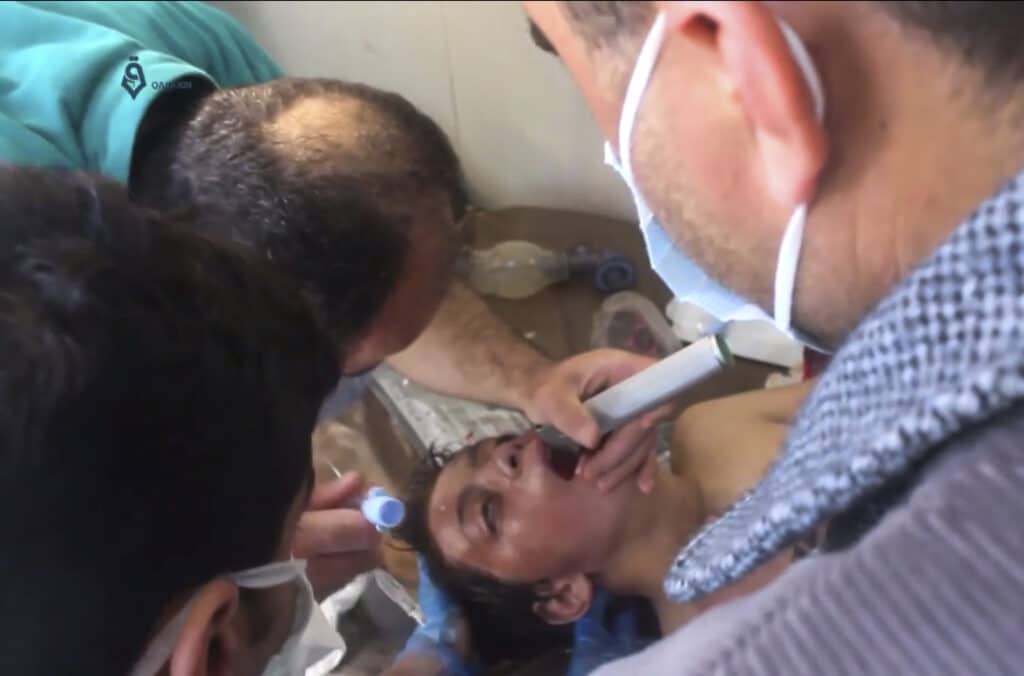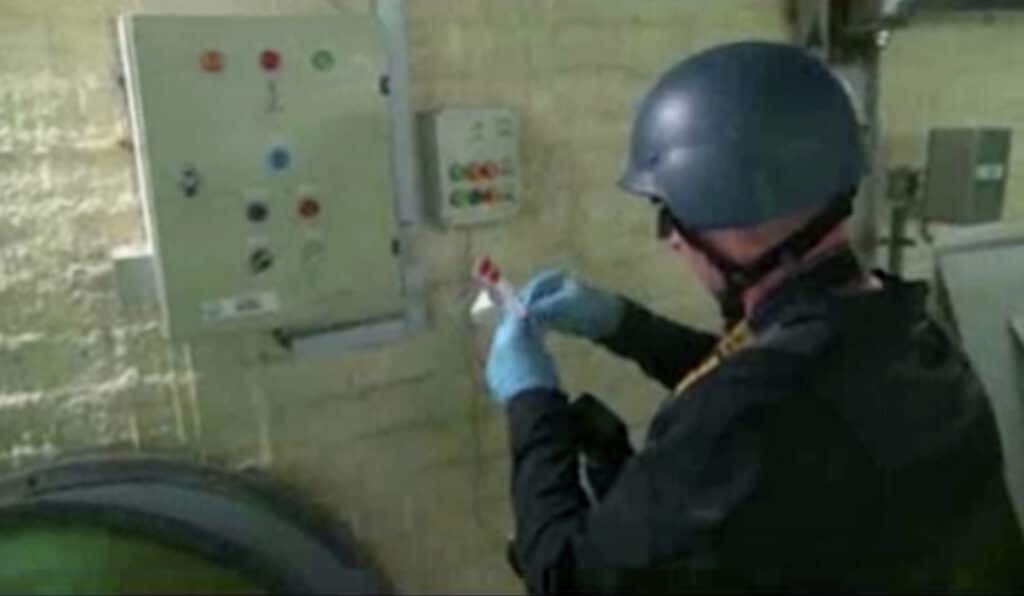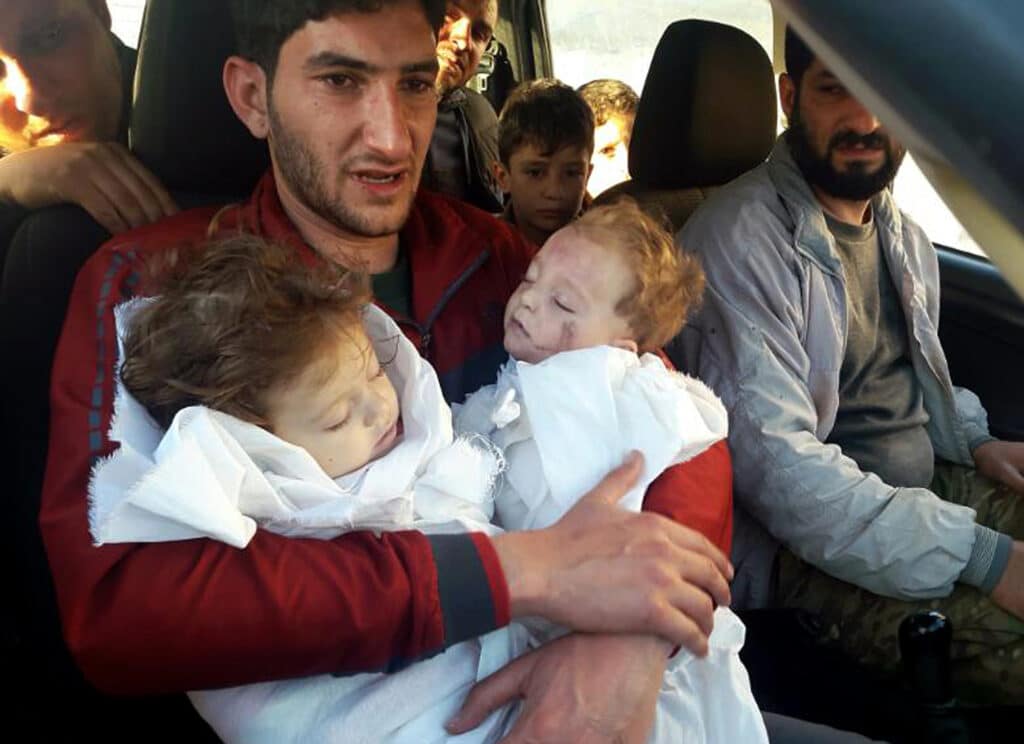It’s feeling like deja vu for some Ukrainians, who remember the horror stories about Syrians who had chlorine cylinders dropped on them. Russian President Vladimir Putin aided Syrian President Bashar Assad in those attacks. The Associated Press has the story:
Putin has threatened to broaden the Ukraine war into a nuclear conflict
BEIRUT (AP) — The chilling scenes from Syria of victims twitching and gasping for air after chlorine cylinders were dropped from helicopters in towns and villages were broadcast over and over in the course of country’s civil war.
Legal and moral taboos were shattered. Hundreds were killed, including many children, in dozens of poison gas attacks widely blamed on President Bashar Assad’s forces under the protection of his chief ally, Russian President Vladimir Putin.
Several years later, concerns are growing that such weapons could be used in Ukraine, where Russian forces have been waging a devastating war for weeks.

As the conflict drags on, Western officials and Ukrainian President Volodymyr Zelenskyy have warned that Putin could deploy chemical agents.
“The world must react now,” Zelenskyy said.
Officials say they are investigating an unconfirmed claim by a far-right Ukrainian regiment that a poisonous substance was dropped in the besieged city of Mariupol this week. The claim could not be confirmed by independent sources, and Ukrainian officials say it could have been phosphorus munitions – which cause horrendous burns but are not classed as chemical weapons.
LOWERING THE THRESHOLD
Putin has threatened to broaden the Ukraine war into a nuclear conflict, but it is unclear if chemical agents will be used to support his military operations. Analysts say the Syria war set a horrific precedent in terms of deploying chlorine, sulfur and the nerve agent sarin, completely disregarding international norms and with no accountability.
“From what we’re seeing now, it seems that Russia has drawn the conclusion that it’s safe to continue this modus operandi from Syria in the Ukrainian context as well,” said Aida Samani, legal adviser with Civil Rights Defenders, a Sweden-based group.
“Of course, that undermines the international regulations that we have in place and lowers the threshold for the use of such weapons,” Samani added.
She has joined with other nongovernmental organizations to file a criminal complaint on behalf of a group of Syrians living in Sweden against the Syrian government for war crimes and crimes against humanity related to its use of chemical weapons.

Western officials say Russia may be looking to borrow from the Syria playbook, where Assad’s forces tested the international community’s resolve by gradually ramping up the brutality of attacks and methods.
Part of the equation in Syria was the difficulty of proving anything in the aftermath of such attacks, largely due to the lack of immediate access. Assad, with Russia’s backing, consistently cast a cloud of confusion, accusing the opposition of fabricating evidence or deploying poison gas themselves to try to frame him.
An investigative mechanism set up by the Organization for the Prohibition of Chemical Weapons blamed Syrian government forces for multiple chemical attacks in Syria, including the use of chlorine and sarin in an attack on the town of Khan Sheikhoun in April 2017 that killed about 100 people. At least one mustard gas attack was blamed on the Islamic State group, which held territory in Syria and Iraq for several years during the war that killed half a million people.
In comments reminiscent of Syria, Russia accused Ukraine of running chemical and biological labs with U.S. support, leading to accusations Moscow was seeking to stage a false-flag incident. Ukraine does have a network of biological labs that have gotten funding and research support from the U.S. — but they are part of a program seeking to reduce the likelihood of deadly outbreaks by pathogens, whether natural or manmade. The U.S. efforts date to the 1990s to dismantle the former Soviet Union’s program for weapons of mass destruction.
RED LINES
The assault early on the morning of Aug. 21, 2013, on the rebel-held suburbs of Damascus known as Ghouta shocked a world that had grown largely numb to the carnage of Syria’s civil war.
Fueling the international outrage were dozens of online videos showing victims in spasms, gasping for breath and foaming at the mouth. The attack crossed what then-U.S. President Barack Obama had called a “red line” for possible military intervention in the Arab country.
Obama came close to ordering U.S.-led military strikes but abruptly backed down after failing to secure the necessary support from the U.S. Congress and instead struck a deal with Moscow to eliminate Syria’s chemical arsenal.
By August 2014, Assad’s government declared that the destruction of its chemical weapons was completed. But Syria’s initial declaration to the OPCW has remained in dispute, and the attacks continued.
In 2017, U.S. President Donald Trump launched several dozen cruise missiles at a Syrian air base in retaliation for a suspected nerve gas attack on the town of Khan Sheikhoun in rebel-held Idlib province that killed about 100 people. Experts from the U.N. and the chemical weapons watchdog blamed the Syrian government for the attack.
As Moscow pushes its offensive in Ukraine, world leaders and policymakers are grappling with how the West should respond to a Russian battlefield use of chemical or biological weapons. Members of Congress said the Biden administration and its allies will not stand by if that happens.
Unlike Syria, however, Russia is a nuclear power. Any reaction risks triggering a nuclear confrontation, which Putin has already alluded to.
ACHIEVING JUSTICE
Samani, of Civil Rights Defenders, faults the international community for not making a real effort to seek accountability for the chemical weapons attacks in Syria.
“There hasn’t really been any political appetite to explore how, for example, a special tribunal could be set up for Syria,” she said.
Last week, she and a group of NGOs presented new information relevant to the sarin gas attacks on Khan Sheikhun in 2017 and Ghouta in 2013 to investigative authorities in Germany, France and Sweden.
But justice appears to be a long way off.
“Holding the perpetrators of these crimes accountable for the use of illegal weapons is the first deterrent to ensure that they do not recur,” said Haneen Haddad, project leader for the Syrian Archive, a Syrian-led project that documents human rights violations and other crimes committed in Syria.
“Without meaningful accountability, cruel actors and their enablers think that they can do terrible things without real consequence from the international community.”
By ZEINA KARAM







